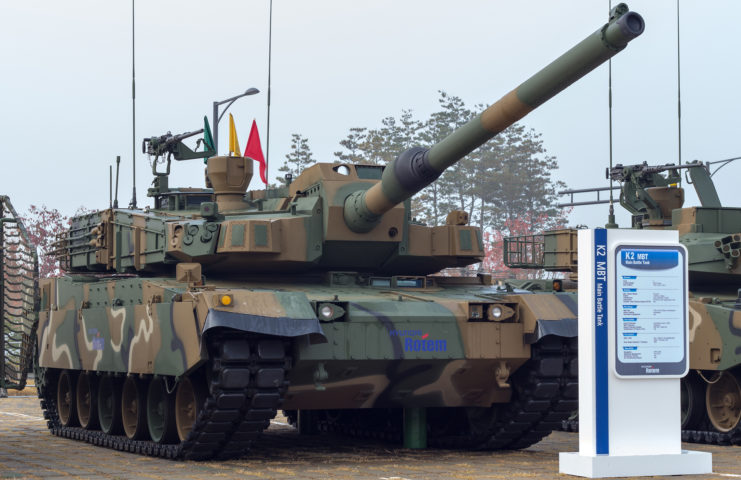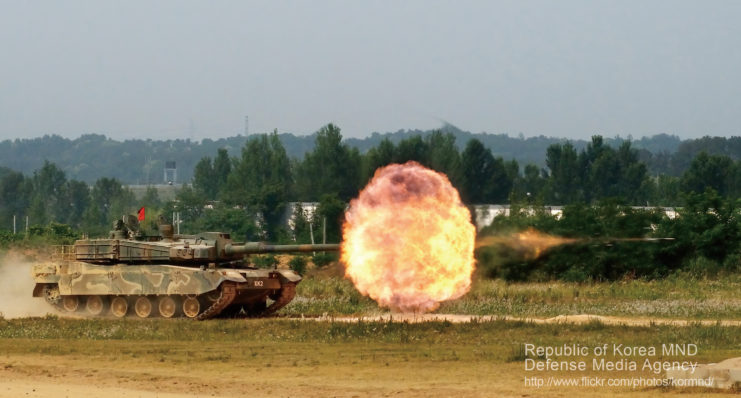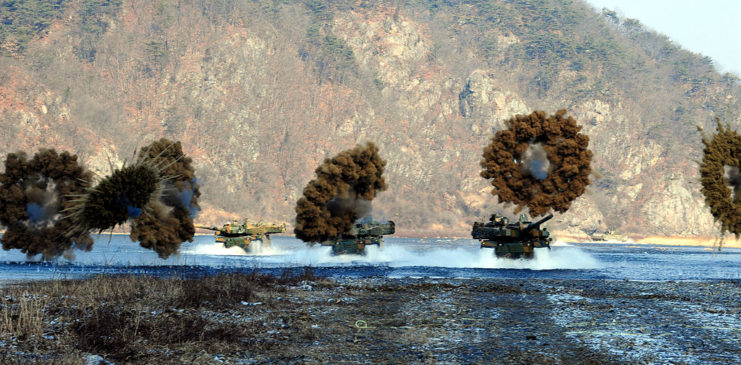Positioned just south of the tense Demilitarized Zone (DMZ), South Korea remains in a constant state of readiness, ever watchful of the volatile regime to the north. Persistent threats from Kim Jong Un’s government have driven Seoul to pour significant resources into strengthening its military, focusing on innovation, automation, and next-generation combat systems.
At the heart of this modernization effort stands the K2 Black Panther—a cutting-edge main battle tank hailed as one of the most sophisticated on the planet. Built to meet the complex challenges of modern combat, the K2 serves as both a powerful deterrent and a crucial frontline asset, embodying South Korea’s determination to protect its sovereignty and maintain regional stability.
Design and development of the K2 Black Panther

For much of the Cold War and the years that followed, South Korea relied heavily on its NATO partners and U.S.-supplied M48 Patton tanks. Once symbols of cutting-edge armor, these vehicles had become increasingly obsolete by the close of the 20th century. When the United States officially retired the Patton in 1987, South Korea faced mounting pressure to field a modern replacement capable of meeting the rapidly changing demands of modern warfare.
In response, Seoul launched an ambitious domestic tank development initiative between 2003 and 2007, resulting in five prototype models. After rigorous testing and evaluation, one design emerged as the clear choice and was approved for full-scale production by the Defense Acquisition Program Administration (DAPA). Yet progress was not without obstacles—persistent mechanical issues, particularly with the powertrain and transmission systems, hindered rollout and postponed the tank’s entry into operational service.
Mass production of the K2 Black Panther

Beginning in 2013, the K2 Black Panther tank was manufactured with German-made MTU power plants to address persistent transmission issues and concerns about the engine’s reliability and durability. By 2014, these tanks were fully combat-ready and started to appear on the battlefield.
In December 2014, production of the K2 shifted to the South Korean company Hyundai Rotem. This transition came with a big cost, as each unit was priced at $8.5 million, ranking it among the most expensive tanks currently in active service.
Impressive defensive capabilities

The K2 Black Panther isn’t just a tank—it’s a battlefield powerhouse engineered to outperform nearly any threat it might face. At the heart of its firepower is the CN08 120mm .55-caliber smoothbore gun, capable of delivering 10 high-velocity rounds per minute with pinpoint accuracy. It’s backed by two machine guns—a 7.62mm coaxial and a 12.7mm K6 heavy machine gun—to tackle both infantry and light vehicles.
But what truly sets the K2 apart is its state-of-the-art fire-control system. Using a laser rangefinder and advanced targeting computer, the tank can engage enemy units up to 6.1 miles away—even tracking and striking low-flying aircraft. That dual-use capability makes the K2 a rare threat in both ground and limited air combat roles.
In terms of defense, the K2 is built like a fortress. Its layered steel-composite armor is designed to absorb and disperse the impact of enemy fire, while an active protection system detects incoming missiles via radar and deploys countermeasures, such as grenade-based decoys, to throw them off course.
Inside, the crew operates from a pressurized, climate-controlled cabin that protects them from chemical, biological, and environmental hazards. In every category—from firepower to survivability—the K2 Black Panther proves why it’s one of the most advanced main battle tanks on Earth.
Mobility of the K2 Black Panther

In addition to its defensive capabilities, the K2 Black Panther is also an impressive mover; the tank can travel at top speeds of between 43-44 MPH. Even while driving over rough terrain, it can reach up to 31 MPH. There’s also an innovative snorkel system, which allows it to cross rivers up to 4.1 meters deep.
The K2 features an in-arm suspension system, allowing it to “sit,” “stand,” “kneel” and “lean.” Those operating the tank can take advantage of these positions to fire munitions more accurately.
Use by other countries

South Korea isn’t the only one taking advantage of the capabilities of the K2 Black Panther. The country’s government has also made deals with other nations to provide them with the tanks. The first was struck with Turkey in 2007. Under the $540 million deal, the Turkish military received a license for the K2, along with the delivery of 40 KAI KT-1 Woongbi training aircraft. While Turkey is building K2s, the nation is importing parts from South Korea.
More from us: BMPT Terminator: Russia’s Supposedly ‘Invincible’ Armored Fighting Vehicle
Poland has also struck a deal to acquire K2s. In July 2022, the country announced it had agreed to purchase 180 of the tanks from South Korea. Delivery of the vehicles is expected to occur between 2023-25.
